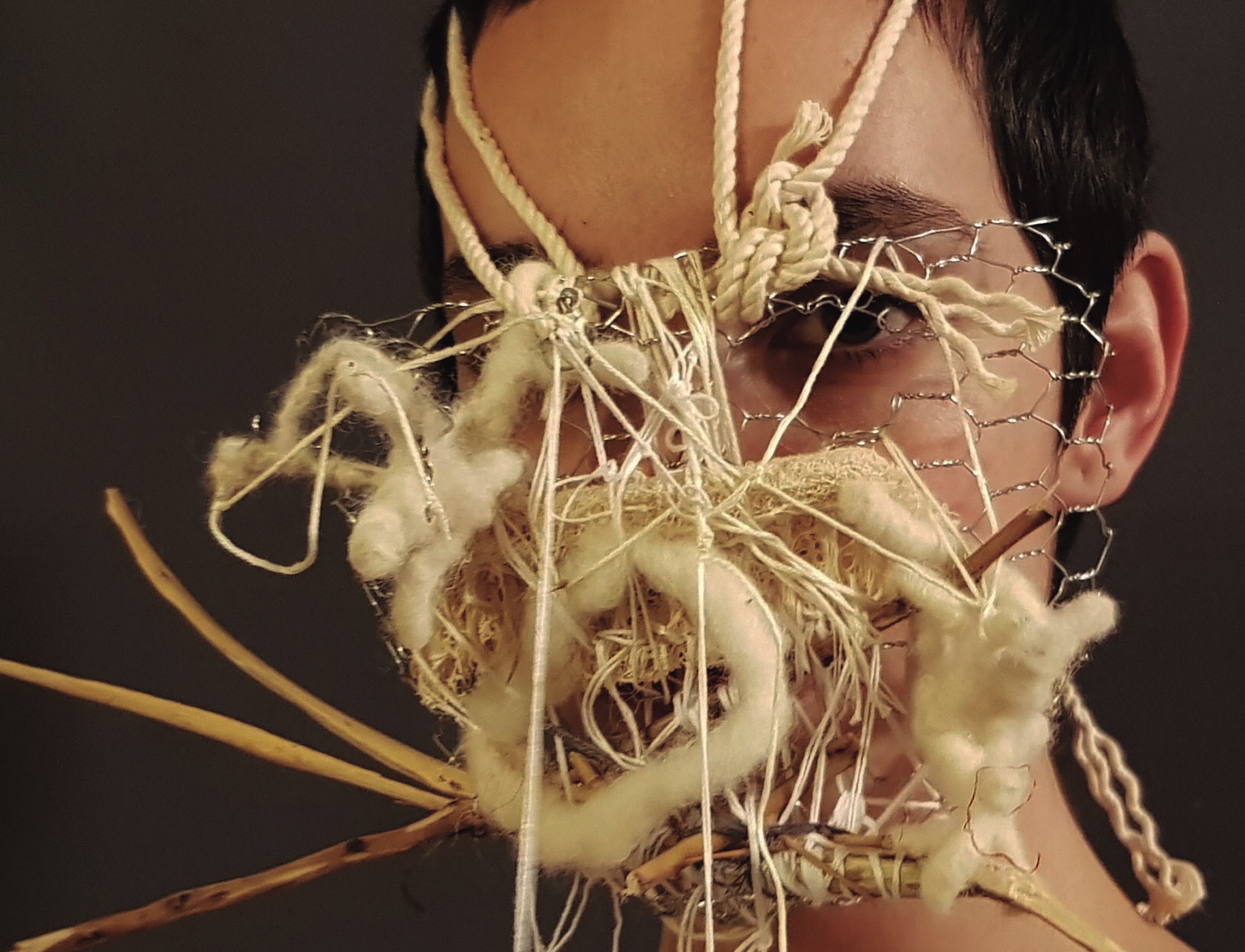
Article
Knot and Tide: On the Work of Laura Mellado
by Christian Camacho
Reading time
5 min
I cannot shed; I can mutate infinitely.
— Diana Urbina
In recent times, with the large-scale rise of autogenerative or automated forms, I’ve found myself thinking again about the place of the knot and the vertex in human imagination, and about the autonomy that emerges from certain materials when trying to engage the organic world through manual labor. Guided by these ideas, I’ve turned my attention to the work of Laura Mellado, an artist originally from Tuxpan, Veracruz, now living in Monterrey, Nuevo León.
In a recent conversation, Mellado told me that she has been knitting, sewing, and embroidering since childhood. But it wasn’t until about eight years ago that she began to trace a sculptural practice on a personal scale—one whose genealogies are rooted in the textile. It was in this realm that I encountered a particularly striking publication of hers last year, titled Mute*, like the English word for “silent” or “silenced.” In this photo-portrait notebook, we find a deeply hybrid process: Mellado invited close women artists to appropriate her materials and methods, collaboratively constructing a series of facial masks or instruments that move fluidly in and out of the organic and compositional principles that define her practice.
![Laura Mellado, Mute project [Marcia Salcedo]. Courtesy of the artist](https://firebasestorage.googleapis.com/v0/b/prod-ondamx-art.appspot.com/o/media%2F1751476513206-marcia_salcedo_final_300.jpeg?alt=media&token=70738002-6fef-482e-9a46-40a39d28cdce)
In discussing the project, the image of a muzzle inevitably arises. Mellado recalls one that belonged to her father, a cattle rancher, which hung on the wall at home like any other object. The consonance of forced silence—a symbol used by artists confronting the normalization of gendered inequality and violence—extends here into structures that, through obstruction, intensify the tension of the gaze, the body, and other material operations. The knot, central to Mellado’s work in Monterrey, becomes the hinge.
![Laura Mellado, Mute project [Laura Gómez Mellado]. Courtesy of the artist](https://firebasestorage.googleapis.com/v0/b/prod-ondamx-art.appspot.com/o/media%2F1751476423246-laura_gomez_mellado_final_300.jpeg?alt=media&token=35749e32-bc7a-4b8a-87bc-7d9f424fcab9)
What struck me most was how the variety of gestures within the group echoed—precisely and not merely due to the uniformity of photographic framing—the artist’s individual practice. The first multitude seemed to mirror a second, psychic and interior one, where the emergence of “species” of textiles (as she calls them) arises from at least two coordinates: a practice of radically open expectations—based in experimentation—and a glimpse into a double diversity of the sea: the diversity of its tentacled species and that of its human communities, extending not only to fishing nets but to clothing and rest.
![Laura Mellado, Mute project [Libertad Alcantara]. Courtesy of the artist](https://firebasestorage.googleapis.com/v0/b/prod-ondamx-art.appspot.com/o/media%2F1751476315097-libertad_alcantara_final_300.jpeg?alt=media&token=9c4b7f93-711b-4c6a-b6e2-d16543bd64bb)
During a visit to her studio, Laura Mellado—assisted by fellow artist Denisse Galván—showed me a collection of pieces, perhaps still in process, perhaps already finished. Maybe studies for other things to come. Or not. Forms suspended in a kind of living provisionality, full of curiosity, yet fed by a certain tension.
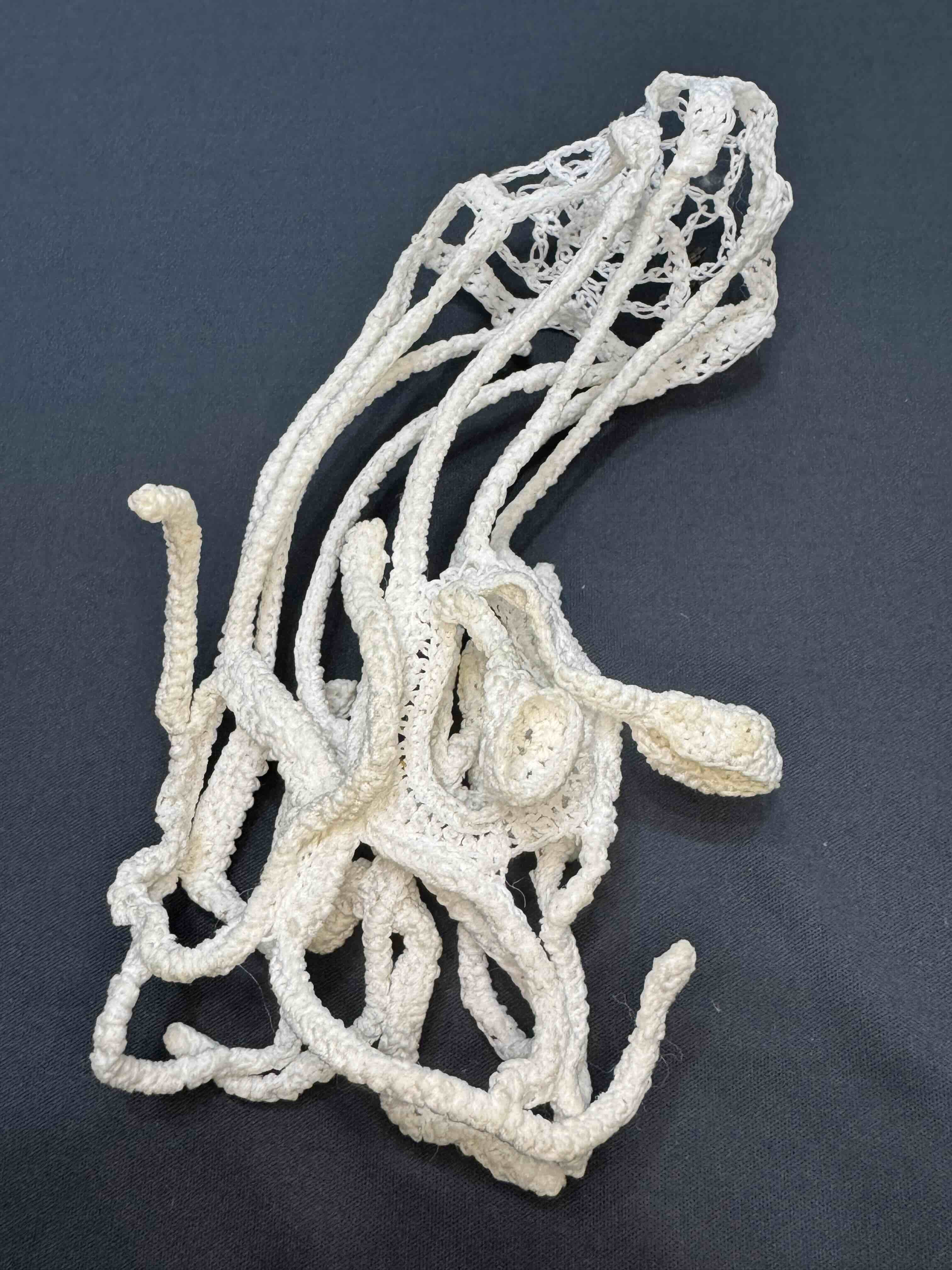
That tension—this knot—also mediates the gaze of the women in Mute, and runs through Mellado’s voice when she speaks of her interests in disparate aspects of matter: often, in unexpected relationships between organic elements like spines or cocoons; other times, in what’s deliberately generated through textile work, such as patterns or recognizable stitches. Among these textile “species” we might find a center, a head, or appendages—but not always. At times, their geometry evokes topological problems, revealing intact connections between the inside and outside of a form, even under the effects of twisting and layering. Many of these results do not emerge from direct planning, but from an open reading of a form’s potential to expand—from mental states or psychological questions, as Mellado puts it, later refined by reestablishing contact with her textile tools.
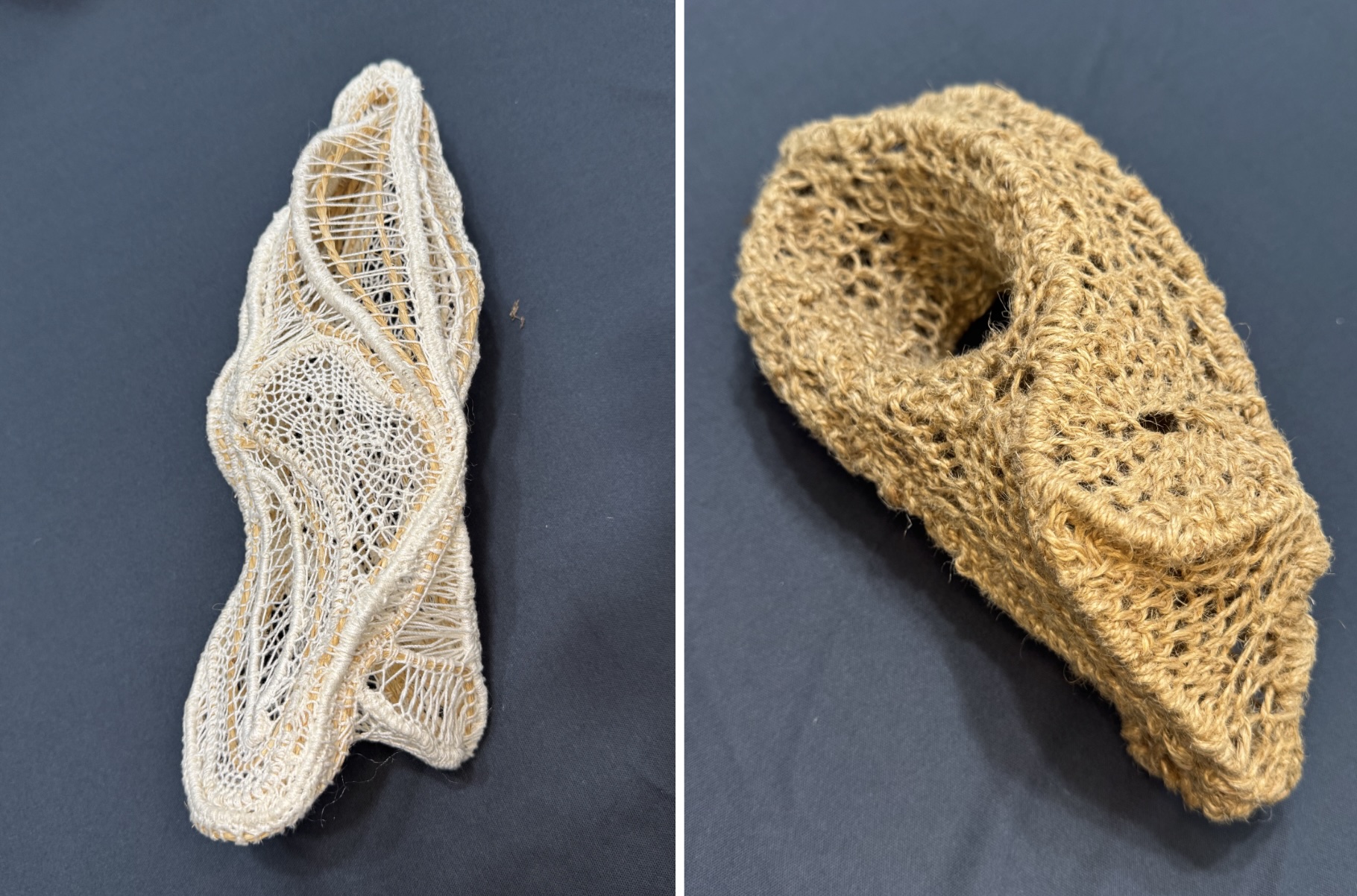
The experimentation I mentioned earlier harbors a significant number of consequences in the work’s finishes: wax over fabric that slowly yellows, frayed jute, or greased paper turned translucent. Coarse and strange qualities in contact with domestic surfaces, suggesting a double mental pulse in which the roots of personal history cross paths with a search for a brief marine mythology.
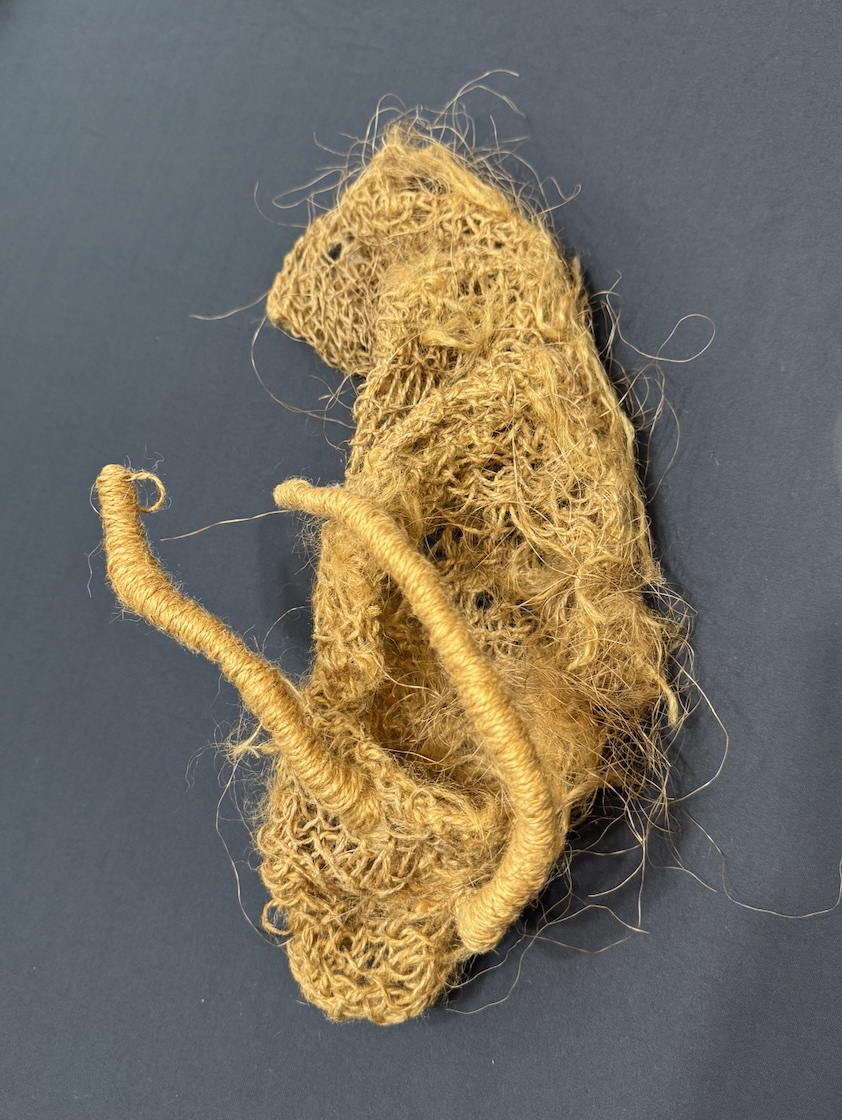
To these orders is added the use of dry needle felting techniques—a process known for creating felt from wool (natural or synthetic), but which in recent years has expanded into all kinds of objects both inside and outside the ornamental realm. In this sort of soft volume construction, Mellado describes the idea of pricking something over and over again. Indeed, her woolen objects share something with her weavings, beyond their textile implications. I mean the textural anomalies that sometimes translate into edges and insertions. From broken ceramics to the cocoons left behind by silkworms in metamorphosis, a common byproduct of sericulture, her materials jump from piece to piece with unsettling results that speak to the confidence her practice places in the confusion between sight and touch.
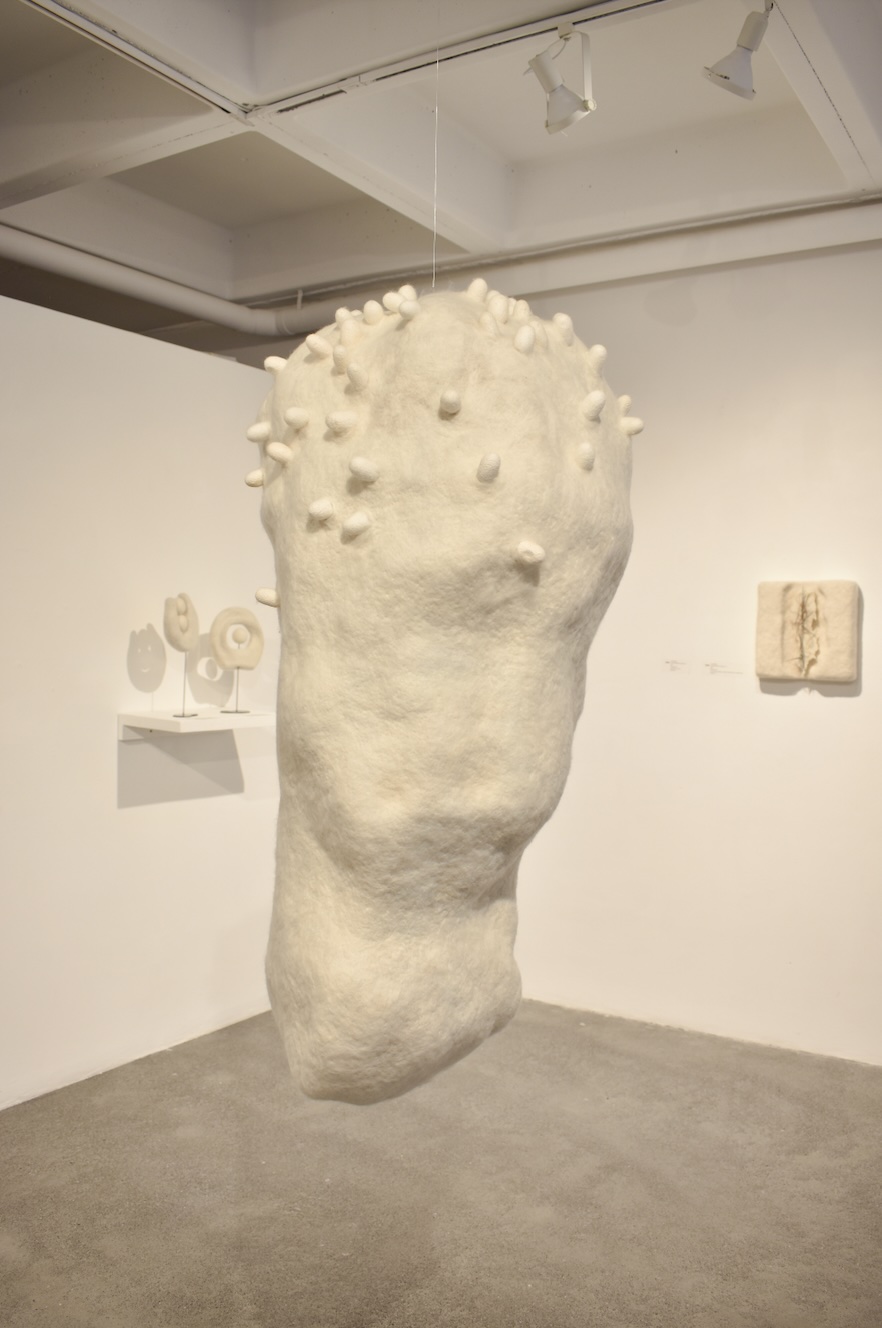
Finally, I’d like to speak to a particular moment that Mellado describes in her process and which she calls a state of rage. It’s not immediately intuitive to associate such an emotion with the personal dimensions of textile modeling. And yet, I believe that by considering the knot once again—as a redirection of forces that confuses tension with balance—we can understand her spatial experimentation with the line as an act of expression. One whose volatility, moreover, lies in the endless dosing of contact with the tide of autobiography.
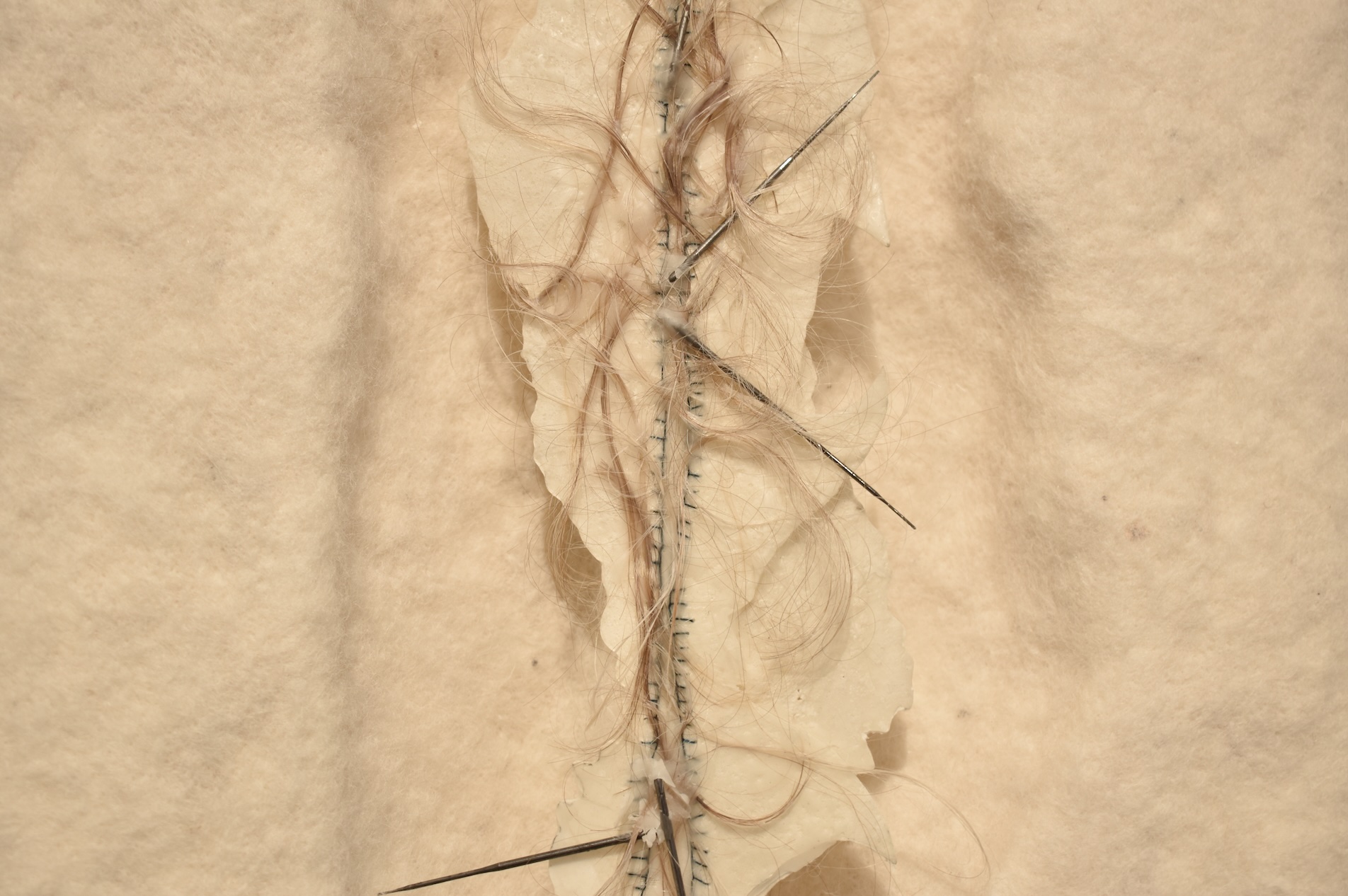
Just as I was once surprised, in my youth, to learn how far the jurisdiction of marine deities extended—far beyond the coastlines—over the once-mythic destinies of people, one of the things Mellado’s practice accomplishes is to mobilize the psychic implications of a personal question. A question strangely present in the Mexican northeast, where the arid rocks etched with glyphs from thousands of years ago outline the fossils of small creatures from millions of years before. With time, how far does the sea reach?
Translated to English by Luis Sokol
* Edited by Virginie Kastel through her publishing label Tres Nubes and accompanied by a text by Melissa García Aguirre.
Published on July 2 2025